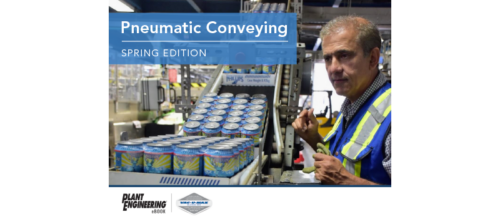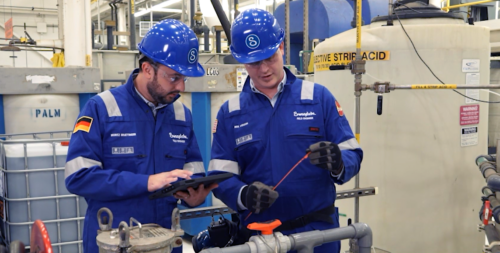A ‘toolbox of technologies’ for sustainability
The targets of opportunity for sustainability improvements can be found in virtually every piece of equipment and among all applications and processes. All the while, the enabling technology “toolbox” for sustainability is rapidly filling up with solutions. Specific and highly practical benefits from proactive sustainability programs can accrue in reduced operating costs; increased ...
The targets of opportunity for sustainability improvements can be found in virtually every piece of equipment and among all applications and processes. All the while, the enabling technology “toolbox” for sustainability is rapidly filling up with solutions.
Specific and highly practical benefits from proactive sustainability programs can accrue in reduced operating costs; increased productivity and profitability; measurable energy savings and reduced CO2 emissions; improved waste and chemicals management; enhanced equipment reliability; and better health and safety working conditions. Great strides have been made in the evolution of approaches and technologies to help realize these goals.
For example, a dominant trend pertaining to sustainability is a transition from fluid-dependent hydraulics and cumbersome pneumatics to cleaner, more environmentally friendly and simplified electromechanical actuation systems. Mechatronics technology is at the forefront.
Mechatronics for sustainability
Mechatronics delivers motion and control in one package, integrating mechanical and electronic technologies with application-specific software. Compared with hydraulic or pneumatic systems, mechatronics can become especially sustainability-friendly where motion will come into play, such as robotics applications.
The infrastructure required for hydraulic systems necessitates a hydraulic unit, a tank for oil and filter systems and other components; pneumatic-driven systems must rely upon air compressors, compressed air filters and filter systems. In contrast, mechatronic-based systems require only power and control wires to perform. Other issues linked with hydraulics and pneumatics include relatively high costs associated with system assembly and mounting; over time, more maintenance will be necessary; noise levels will be noticeable; and the danger of hydraulic oil leakage will be ever-present. All tend to be inconsistent with sustainability goals and make a strong case for organizations to assess the viability of mechatronics for plant operations.
From data to information
From another technology perspective, data is “king” in any sustainability program for documenting and quantifying progress, supporting decisions and fulfilling mandated obligations for environmental, health and safety compliance reporting. But information is only as good (and useful) as its sources, gathering methods and timeliness. More often than not, excessive time is consumed to collect, analyze, reformat and prepare consistent and uniform reports; multiple (and far-flung) locations, languages and regulations can present unwanted complexities; and incompatible IT platforms and reporting protocols can make communications and reporting all the more challenging.
Solutions have arrived with advances in information technology. These include customized Web-based environmental, health and safety information management systems to extend across geographical, functional and cultural lines and promote consistent regulatory compliance, uniform record keeping and streamlined decision-making and reporting within a manufacturing organization.
Systems can electronically automate key EHS functions including audits, chemicals management, regulatory reporting and sustainability metrics, among others. This can drastically reduce time and money usually spent in collecting, analyzing, reformatting and preparing data. Especially relevant for sustainability, capabilities expand with the opportunity for live CO2 footprint tracking and performance tracking and measurement.
Analysis first
A top-to-bottom energy and environment analysis can serve as a starting point. They can identify areas of high energy consumption and evaluate chemical treatments, lubrication use and other processes to determine environmental risk. Improvements linked to opportunities can be introduced based on remedial action recommendations. Analyses also provide benchmarking data for arriving at realistic objectives and measuring results based on established goals and targets.
Practices to improve reliability and efficiency of assets can pay big dividends in striving toward sustainability success. Regularly monitored and well-maintained equipment can save energy, increase uptime, drive profitability and advance core sustainability objectives.
No panacea
Of course, no “one size fits all” blueprint exists to universally chart the course of sustainability programs. How a particular sustainability effort is devised and implemented will depend on factors ranging from an organization’s culture to its capabilities and ongoing commitment.
Author Information
Bart G. Bartholomew is vice-president of SKF Reliability Systems NA, a business division of SKF USA Inc. He can be reached at (215) 513-4570 or Bart.G.Bartholomew@skf.com .
Do you have experience and expertise with the topics mentioned in this content? You should consider contributing to our CFE Media editorial team and getting the recognition you and your company deserve. Click here to start this process.



